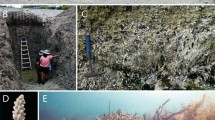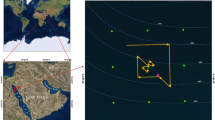Abstract
DR. CYRIL CROSSLAND (NATURE, Oct. 12, p. 576) refers to my discovery of coral fragments in a parasitic tuff-cone at Tataa Point, at the north-west corner of Tahiti. The size and water-worn character of these fragments and of the associated basaltic pebbles in the tuff suggest that the cone was built by eruptions through an old beach sprinkled with coral debris. Had the eruption burst through a solid reef, it may reasonably be supposed that large angular blocks of coral would be found. Dr. Wayland Vaughan and Dr. J. E. Hoffmeister agree as to the age of the corals. The latter writes: “Most of the fragments seem to belong to Porites, two to Acropora, two to Pavona and two to Pocillopora. The Pavona is of the same type as P. duerdeni, Vaughan, or P. maldivensis (Gardiner), which are common in the Pacific of to-day. As Dr. Vaughan has said, there is nothing in this collection which might lead one to suspect that they are older than Pleistocene.” He adds that among a collection of recent corals, made by Prof. Setchell, from the barrier reef off Papeete Harbour, he can find none common to the Tataa fauna.
This is a preview of subscription content, access via your institution
Access options
Subscribe to this journal
Receive 51 print issues and online access
$199.00 per year
only $3.90 per issue
Buy this article
- Purchase on Springer Link
- Instant access to full article PDF
Prices may be subject to local taxes which are calculated during checkout
Similar content being viewed by others
Author information
Authors and Affiliations
Rights and permissions
About this article
Cite this article
WILLIAMS, H. Age of the Tahitian Coral Reefs. Nature 124, 727–728 (1929). https://doi.org/10.1038/124727c0
Issue Date:
DOI: https://doi.org/10.1038/124727c0
Comments
By submitting a comment you agree to abide by our Terms and Community Guidelines. If you find something abusive or that does not comply with our terms or guidelines please flag it as inappropriate.



